Managed Connected Medical Device Security (IoT/IoMT)
Protecting the functionality and reliability of medical devices for healthcare organizations.
Let's Talk
Securing your IoT/IoMT ecosystem
Connected medical devices are essential for patient safety and care, yet healthcare organizations often lack insight into this equipment and its supporting networks.
Fortified’s Managed Connected Medical Device Security service closes IoT/IoMT security gaps with 24/7 monitoring, investigation, threat hunting, and remediation.
Centralizing the security of your connected medical devices
Accessible on desktop or mobile, the platform allows you to:
- View prioritized risk across connected devices
- Examine your full list of alarms
- Manage and assign escalations
- Customize your notifications
- Chat live with a Fortified Security Analyst 24/7
- Benchmark performance against the client ecosystem
- View data across your desktop, laptop, or mobile device
Force-multiply your protection
Having multiple Fortified Security Operation Center (SOC) services allows our Security Analysts to better analyze and correlate your data, providing you with a more comprehensive program overall. Supplemental options include:





